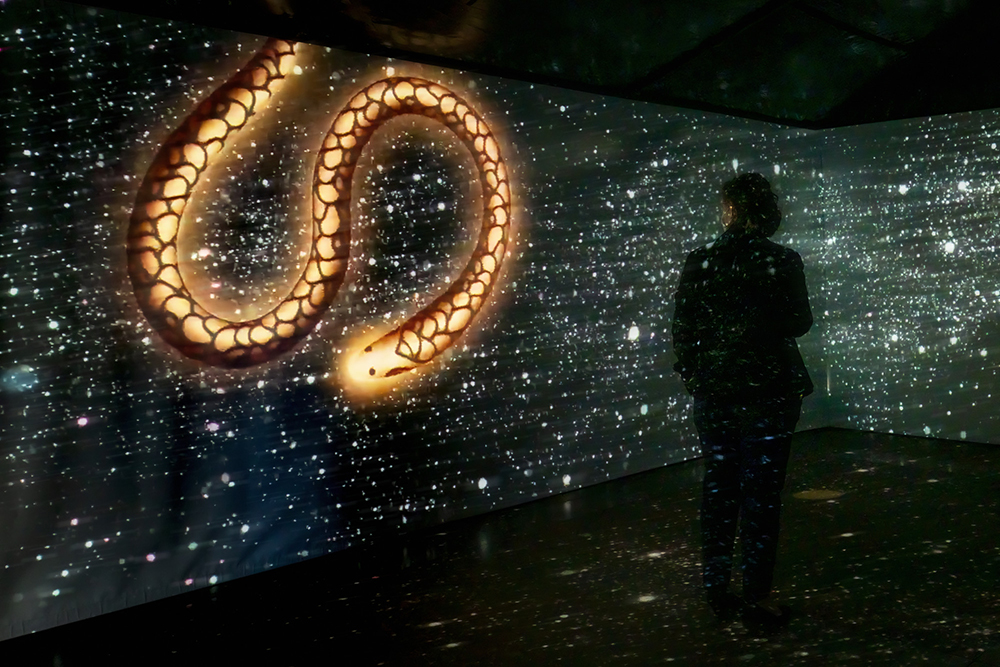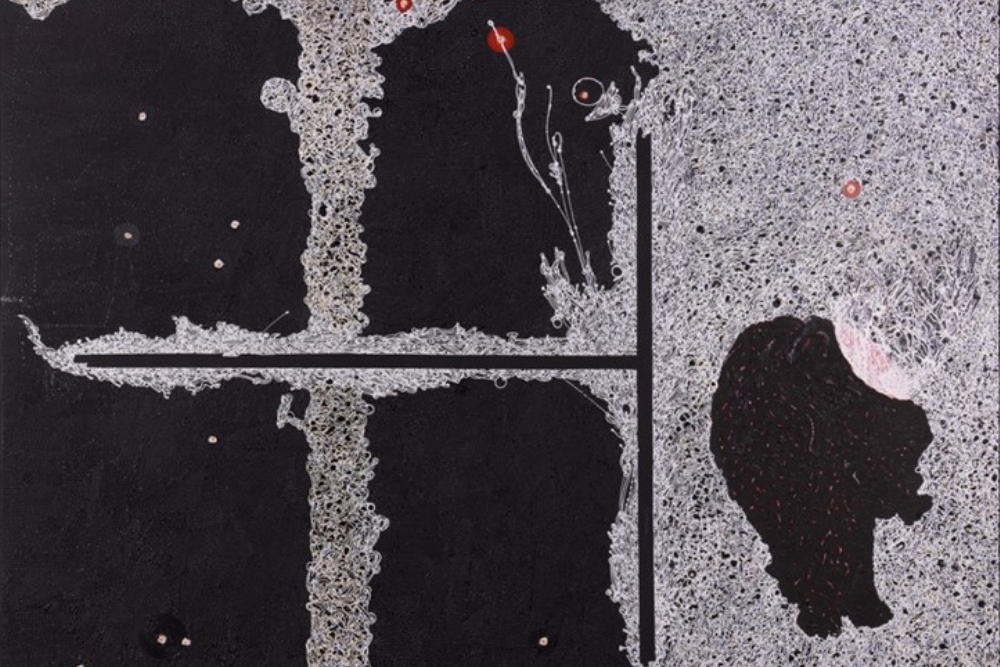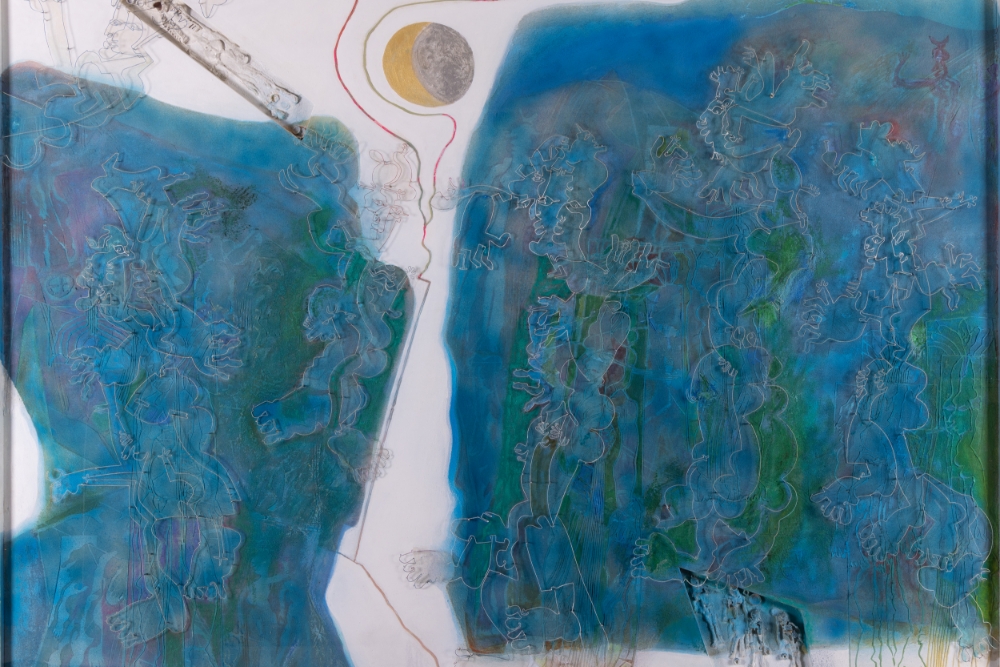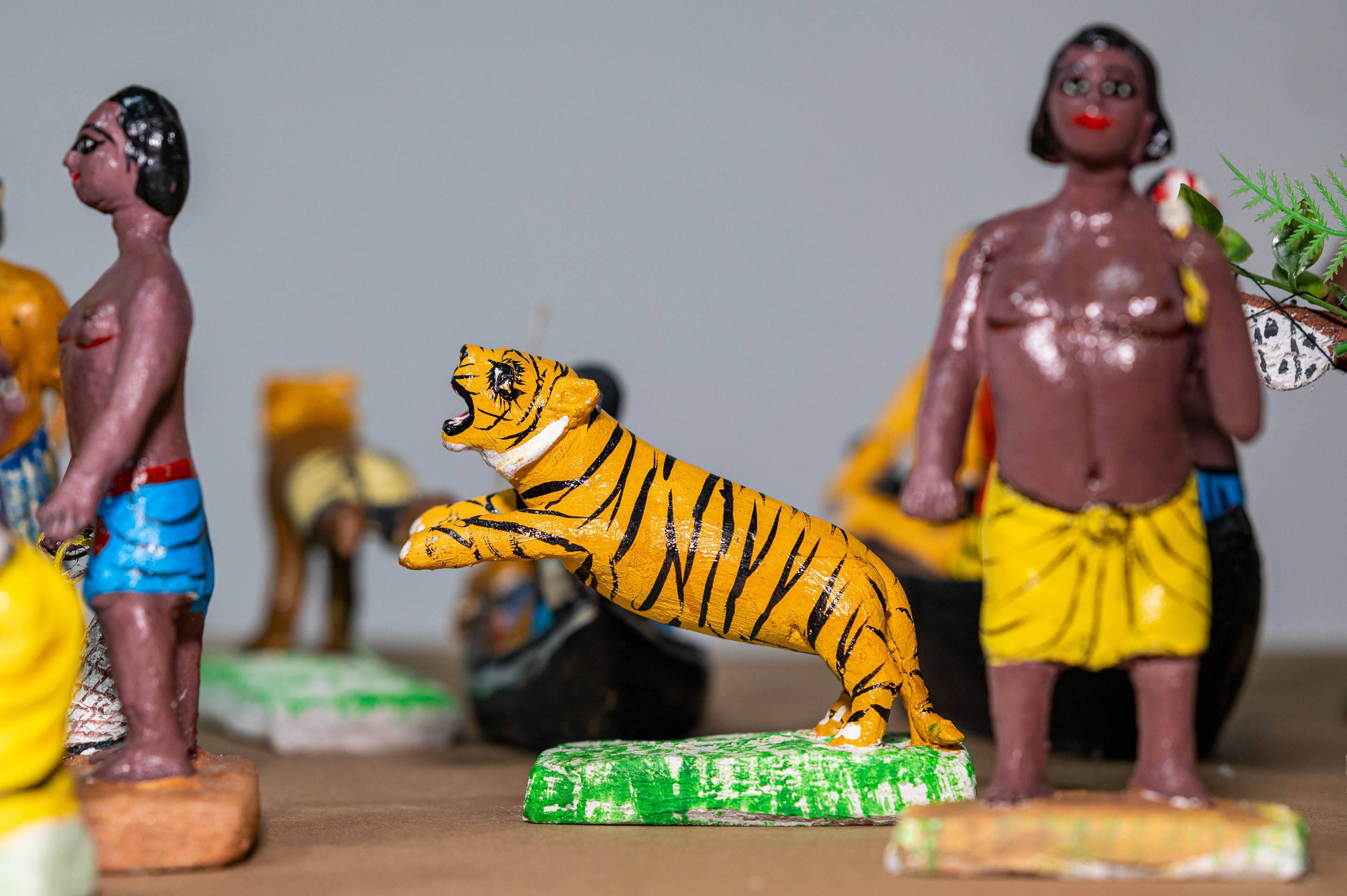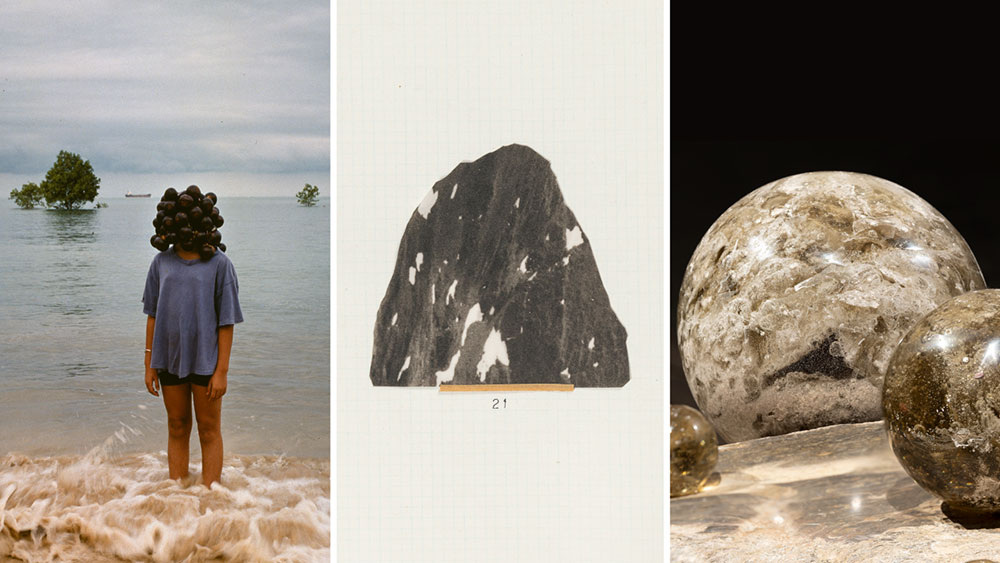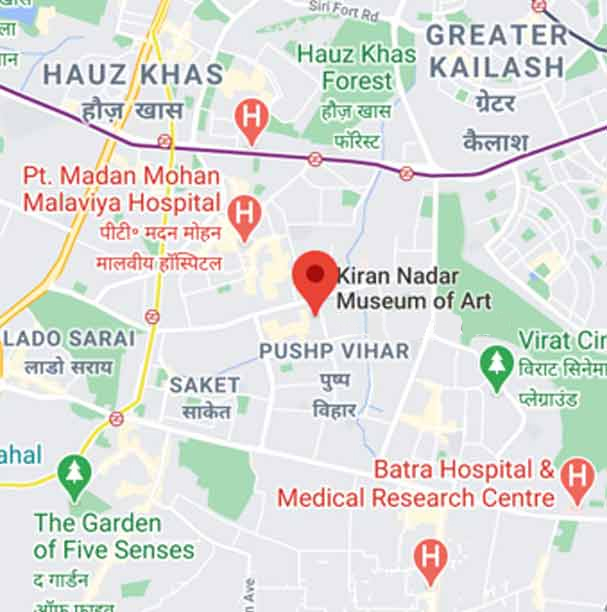- Home
- KNMA, Noida
KNMA, Noida
The exhibition, conceived by Dardi, focuses on objects described in literature that either emerge as inventions—products of the vivid imaginations of writers who inadvertently become “designers”—or as everyday items that define the atmosphere of a story with remarkable precision, often surpassing descriptive language in their evocative power. In some cases, the literary text inspires associations with iconic objects from design history, materializing the mental imagery sparked by reading.
Anastasio enriches this dialogue by incorporating works of Indian literature, art, and design, creating a cultural exchange between Italian and Indian storytelling and craftsmanship. Produced by the Italian Cultural Institute in New Delhi, "Objects Between the Lines" celebrates the interplay between two creative disciplines—literature and design—from Italy and India. The exhibition is structured into three sections: Found in Translation, highlights objects born from literary imagination, brought to life by designers who interpret and transform these descriptions into physical creations; Scenarios, explores scenes from literature, interpreted across multiple media by contemporary designers; and Free Associations, features iconic pieces from Italian design history, paired with descriptions from literary masterpieces, forming a dialogue between the written word and physical form.
The exhibition features an impressive lineup of historical artifacts, on loan from public institutions and private collections, displayed alongside specially commissioned works by Italian and Indian designers. Featured contributors include Andrea Anastasio, Gae Aulenti, Matilde Cassani, Achille Castiglioni, Riccardo Dalisi, Arina Endo, Luca Galofaro, Giulio Iacchetti, Giovanni Innella, Martand Khosla, Ugo La Pietra, Lemonot, Giovanni Levanti, Vico Magistretti, Gianluca Malgeri, Enzo Mari, Bruno Munari, Ernesto Pirovano, Paolo Portohesi, Margherita Rui, Richard Sapper, Sissi, Ettore Sottsass, Nanni Strada, Studio Formafantasma, Studio Ossidiana, Paolo Ulian, Marco Zanuso, Aradhana Seth, and Avinash Veraraghavan.
Literary texts by: Ludovico Ariosto, Massimo Bontempelli, Vitaliano Brancati, Aldo Buzzi, Italo Calvino, Achille Campanile, Kiran Desai, Carlo Emilio Gadda, Natalia Ginzburg, Guido Gozzano, Giacomo Leopardi, Primo Levi, Homer, Aldo Palazzeschi, Elio Pecora, Luigi Pirandello, Marco Polo, Gianni Rodari, Alberto Savinio, Trilussa, Sandro Veronesi, Vitruvius.
Purvaee, the eastern wind, investigates pathways of creative sensibility transmission and modes of visual representation among the first generations of teachers in two pioneering art institutions in the country, through diverse chronological orbiting. The core narrative of this show is derived from the masters' practices, which converse with the artistic practices of subsequent generations. It reflects on the methods of institutional inducement, which allowed their acolytes to develop a wide range of artistic sensitivity. Many of these students have gone on to make important contributions to the field of modern and contemporary art.
Kala Bhavana (Estd.1919) in Santiniketan and the Faculty of Fine Arts (Estd. 1950) in Baroda significantly influenced holistic art approaches in India . Artist-pedagogue Nandalal Bose (1882- 1966)., influenced by Gandhian ideas, believed in artisanal production and a close artist-viewer connection to enhance sensitivities and quality. The importance of comprehending and determining subject matter was generated and proliferated from a principled engagement in Santiniketan by Bose. Mentored by Abanindranath Tagore, he carried forward and imparted a stylistic lineage that was a synthesis of references drawn from Ajanta murals, Indian miniatures, to Far-Eastern linear intonations in ink washes. Bose's belief in empathetic observation that enlivens the inner nature of objects on pictorial surface, a prevision sustained by his protégé, Benode Behari Mukherjee (1904- 1980) and Ramkinkar Baij (1906- 1980). Such teachings through creative evolution were later found in succeeding generations of artists, including Sankho Chaudhuri (1916 – 2006), KG Subramanyan (1924- 2016), Krishna Reddy (1925 – 2018), Sarbari Roy Choudhury (1933- 2012) and A Ramachandran (1935- 2024) who traversed the country and beyond as educators and practitioners. Selected works constituting stylistic, formalistic, observational, and methodological criteria from their sprawling practices strike a dialogue with the works of their students Mrinalini Mukherjee (1949 – 2015), Pushpamala N. (1956), KP Krishnakumar (1958 -1989), Vasudevan Akkitham (1958), Bhagat Singh (1958) and Manisha Gera Baswani (1967).
The exhibition will display works produced between the 1940s and the 2000s, with one exceptional and renowned work ‘Sati’ a Japanese woodblock print by Nandalal Bose from the early 20th century, which was critically acclaimed. It will explore the instructive and stylistic transformations that are observed in the works of subsequent generations of artists. Exploring subjectivities and singular representations while focusing on a small area dedicated to the practices of these fourteen artists the exhibition will participate in a conversation that is profound and broad at the same time. It will study representational phrases and the impressions that occur as styles, shapes, and annexations in a non-sequential manner, using the masters' structural drawings as a teaching tool to make connections between similarities and contrasts.
With more than 200 artworks from the museum collection, unfolding its span and richness the exhibition will investigate associations between individual practices, inter-generational creative dialogues, and institutional peculiarities.
An exhibition of Doll Arts of West Bengal and Their Stories, is an initiative of the Tram Arts Trust, an object theater group based in New Delhi and Mumbai. The group was formally registered as a not-for-profit organization in 2015. Tram, builds its artistic work to explore the world through ‘theatre with objects’. The Trust experiments with its possibilities to create a reflective and evocative theatre experience through various objects and continuously strives to evolve the vocabulary of what object theatre can encompass. Presently, their focus remains on identifying and working around objects specific to the Indian subcontinent. Tram’s emphasis on the doll-making tradition of West Bengal and its integration into their theatre practice was a natural evolution. This focus stemmed from the passing down of a few generational handmade dolls, originally given as gifts to a young bride, to one of the group members. Further investigation into the process revealed a series of untold stories and oral traditions surrounding doll-making, the artisans, and the communities behind them. This exhibition, thus developed as a result of extensive ethnographic research that aims to gather, catalogue, and safeguard tales related to both traditional and modern forms of doll-making art in West Bengal.
The exhibition largely showcases the "Tepa Putul" or hand-pressed dolls, where "Tepa" means 'pressing' and "Putul" means 'doll' in Bengali language. This term refers to a simple process in which the dolls are made by pressing raw clay with fingers. The dolls in this exhibition have been created using this method and closely resemble the artifacts discovered at the excavated sites of the Indus Valley Civilization. Official surveys conducted by the Ministry of Micro, Small and Medium Enterprises (MSME) and Textiles, Government of West Bengal, under the Biswa Bangla initiative in 2015, provided support to around 28 significant doll-making traditions, although, many more such traditional and contemporary doll-making heritage are yet to be acknowledged. Throughout the State, every single district is home to doll-making villages and households, each with its unique style, history, and narrative. Artists utilize Indigenous materials such as clay, wood, cloth, metal, shola (sponge wood), shellac, jute, shells, palm leaf, seeds, coconut, betelnut and rice powder to craft dolls. Contemporary doll-making styles and narratives have also emerged recently. These hand-made dolls have remained bearers of various belief systems, histories, folklore, and lifestyles for many communities and individuals within the collective. They provide insights into the land, people, and environment, while also offering opportunities for broader reflections.
The different styles, methods, materials, regional influences, and religious significance of these dolls have been well-documented through research and literature. However, what has been largely overlooked are the narratives associated with the dolls and their creators. This project intends to address this gap by emphasizing the stories of the doll artists and the tales from the communities whose lives are interconnected with the dolls. The aim is to investigate the diverse ways in which the dolls remain an integral part of the lives of the people who coexist with them.
The exhibition features dolls categorized as Khelna Putul (play dolls), Deb Putul (worship and ritual dolls), and Shajano / Samajik Putul (display and decorative dolls). Originally, there were two main styles - Deb Putul and Khelna Putul, with Shajano Putul emerging later as a newer development. These dolls are sourced from various villages in Bankura, Howrah, and Murshidabad districts. Additionally, the exhibition includes dolls created by artists from Manmathanagar village in Gosaba District, located in the Sundarbans region, each with their own unique styles and stories.
Kiran Nadar Museum of Art, in collaboration with the Tram Arts Trust, is delighted to showcase a selection from the Trust's ongoing research on Doll Arts through this exhibition, along with scheduled workshops and performances of the play "Maati Katha." This collaboration aims to engage with a broader audience, offering participants and visitors memorable experiences and stories to share.
MIRROR/ MAZE: Echoes of song, space, spectre
The formulation of this exhibition owes its stimulus to artists and their compelling forms of practice, initiating a re-thinking about art and its presence in our lives. Watching an artist push the limits of her body and mind to endure pain and perform her seven deaths is a telling image, perhaps of a long drawn struggle to liberate herself from the fear of mortality and the unknown. Deeper truths often lie beyond the realm of reason. Artists hold a mirror to the sensed, felt and partially known worlds.
The self-willed journeys of these artists not only highlight the meticulousness of their craft, depth of their content and enchantment with technology, but more so, their determination, focus and grit to confront the ineffable and indefinable through their practice. With a creative force oscillating between meditation and labour, stillness and action, aimlessness and purpose, they gather themselves to step out of their comfort zone, enter unfamiliar spaces and labyrinths and take us along into the deeper realms of our being. They raise difficult questions that have no easy or definite answers.
The exhibition in the form of a space-maze, takes the viewers through long corridors that lead us into dark spans and illuminated areas, into painted images and artificial hyper realities, immaterial presences and fantastical objects, evoking an impalpable sense of awe, beauty, and mystery in the ‘surreality’ of time and space.
These encounters open paths for newer understandings.
And we become much more than what we are, in that moment of realization.
Prussian Blue: A Serendipitous Colour that Altered the Trajectory of Art
Kiran Nadar Museum of Art
Curated by Dr Arshiya Lokhandwala
Preview: Monday, September 18th, 2023
Prussian Blue: A Serendipitous Colour that Altered the Trajectory of Art is a survey exhibition of nineteen artists exploring their engagement with the colour Prussian Blue. This invitation is extended to the artist to explore, investigate, and engage with the colour in their own unique and individual manner. Although Prussian Blue is widely used in the artist’s colour palette its uniqueness is relatively unknown, nor is its link between art and science that truly transformed the course of art forever.
Blue has historically always been a colour of great magnitude, symbolizing serenity, stability, inspiration, and wisdom. As a colour blue has been prominently visible since the third millennium BC in ancient Egypt produced by grinding down lapis lazuli mined from the mountains of Afghanistan, and used in jewelry, painting and on the sarcophagi. Its lengthy grinding and washing process makes the natural pigment valuable—roughly ten times more highly priced than the stone it comes from and as expensive as gold. This prohibitive pricing and shortage of the material resulted in blue becoming a color of privilege in which the preciousness of the pigment was reserved for sacred subjects, such as the robes of religious figures, depictions of the Virgin Mary and other votive images commissioned paintings for the nobility during the Renaissance. There is an interesting story that suggests that Michelangelo couldn’t afford ultramarine (another name for lapis lazuli) for his painting The Entombment, leaving it unfinished as the result of his failure to procure the prized pigment. In a similar manner as the west, ground lapis lazuli was also used to adorn the Indian miniature paintings as color held an extreme significance, both in terms of visual representation and symbolic meaning, sometimes, however making way for cheaper substitute such as indigo and azurite due to its exorbitant costs.
Hence it was by accident in a Berlin laboratory (then a center for alchemy) in 1704 that changed the course of art forever. Two German alchemists, Jacob Diesbach and Johann Konrad Dippel chemists rushed to create a batch of cochineal red (made from bugs) accidentally used potash contaminated by (the iron in) animal blood that turned the concoction a deep blue – henceforth known as Prussian blue or Berliner Blau, due to its geographic origins and because the Prussian army dyed its soldiers’ jackets with the colour.
This new blue pigment was not only affordable but also stable (colourfast) and became an instant sensation. Previously using fast fading vegetable dyes or indigo for blue, Japanese artists found the new pigment revolutionary. Japanese woodblock artist Katsushika Hokusai used it to create his iconic The Great Wave off Kanagawa, as well as other prints in his Thirty-six Views of Mount Fuji series, in 1830, used the new Prussian blue, in combination with the traditional indigo, to great effect.
Many artists turned to Prussian blue to convey deeper emotions including Pablo Picasso whose work between 1901 and 1904 called his “Blue Period“ that Christie’s Impressionist and Modern Art specialist Allegra Bettini adds ‘cast[s] a melancholy shade on his works.’ Prussian Blue revolutionized an art industry starved of a stable blue pigment to rival the prohibitively expensive ultramarine. The world’s first synthetic pigment was thus born.
The exhibition features works across a range of media, including, painting, sculpture, video, and installation art. For example, the Cyanotypes experiments Interplay # 139 by Parul Gupta, or Sea-wind of the Night 1 a painting by Anju Dodiya on fabric which draws on the Japanese woodblock artist Kats ushika Hokusai’s iconic The Great Wave off Kanagawa or the majestic painting by N S Harsha, Andhar Bahaar of an astronaut looming in deep space or Mithu Sen’s Tritanopia (blindness of Blue) that contains no blue to name a few, allow us to contemplate a deeper understanding of colour and its significance
Participating Artists:
Anita Dube, Anju Dodiya, Alke Reeh, Astha Butail, Atul Dodiya, Desmond Lazaro, Mithu Sen, N S Harsha, Sheba Chhachhi, Shilpa Gupta, Subodh Gupta, Parul Gupta, Prajakta Potnis, Ranbir Kaleka, Sumakshi Singh, Shambhavi, Thukral & Tagra , Vivan Sundaram, Waqas Khan
Visiting the exhibition
Public View: 19 September – 20 December 2023
Venue: KNMA, Noida
Address: KIRAN NADAR MUSEUM OF ART
Plot No. 3 A, Sector 126,
NOIDA, U.P.
Timing: 10:30 A.M - 6:30 P.M
The museum is closed on Monday and all public holidays
Admission to exhibitions is free
The Kiran Nadar Museum of Art (KNMA) is delighted to present a new group exhibition titled, Inner Life of Things: Around Anatomies and Armatures curated by Roobina Karode (Chief Curator and Director, KNMA) at the Noida space of the museum. The exhibition brings forth independent projects by 15 artists whose investigations are rooted in the ecologies of co-existence as well as the enigmatic life of objects and materials beyond and autonomous from human perception.
INNER LIFE OF THINGS: AROUND ANATOMIES AND ARMATURES
26 April 2022 to 28 December 2022
KNMA-NOIDA
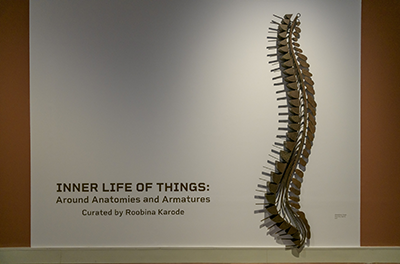
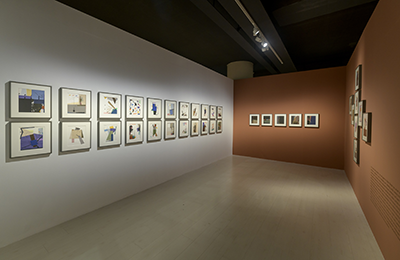
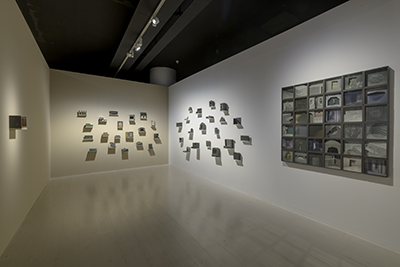
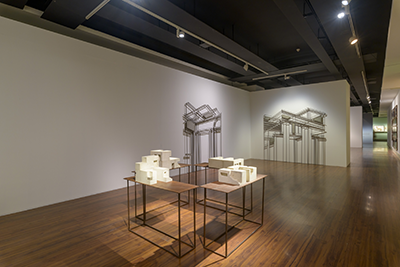
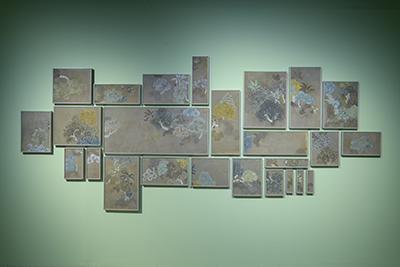
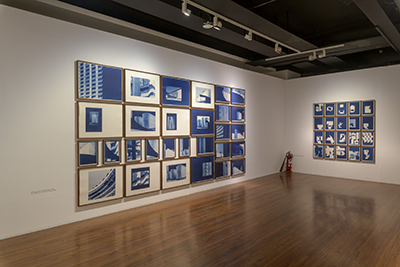
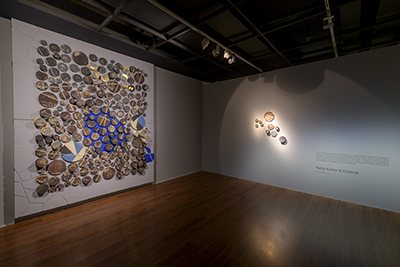
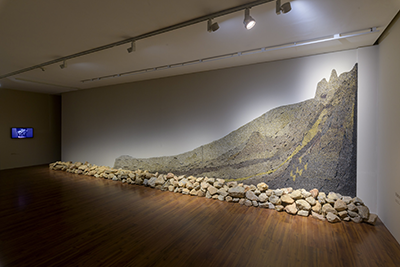
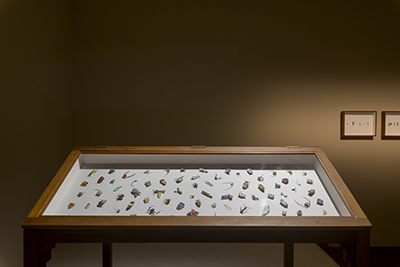
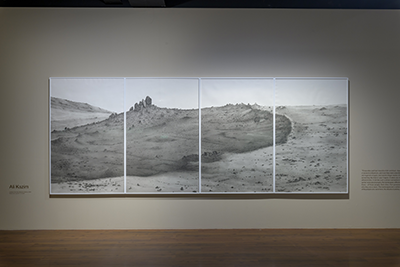
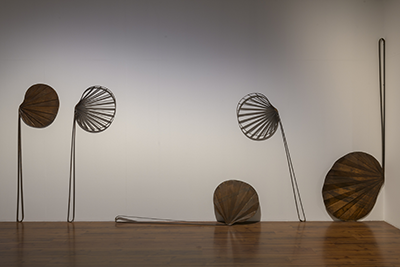
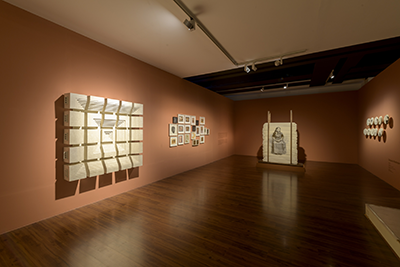
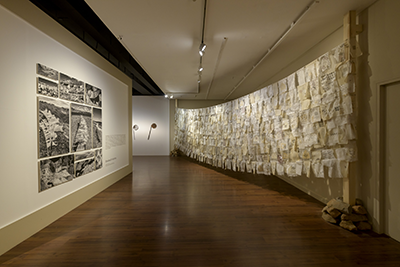
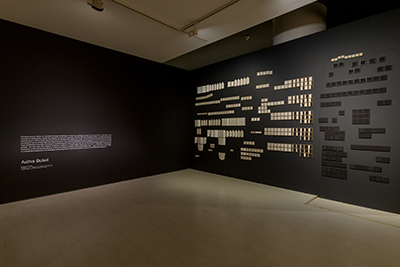
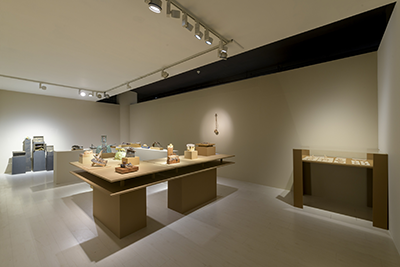
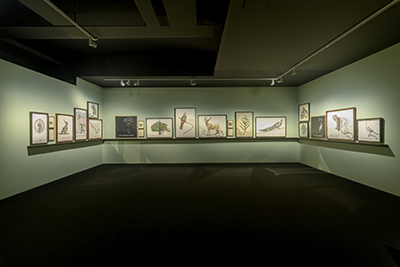
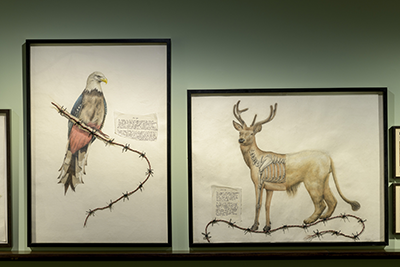
The Kiran Nadar Museum of Art (KNMA) is delighted to present a new group exhibition titled, Inner Life of Things: Around Anatomies and Armatures curated by Roobina Karode (Chief Curator and Director, KNMA) at the Noida space of the museum. The exhibition brings forth independent projects by 15 artists whose investigations are rooted in the ecologies of co-existence as well as the enigmatic life of objects and materials beyond and autonomous from human perception. The show opens at a time when, following the COVID-19 outbreak, attempts to claim what is humane and the social appear to be the most popular and urgent questions. However, unravelling a world pre-dating or even outliving the time of humankind on earth, the exhibition proposes a radical ethic of co-existence uncorrupt by the hubris of man. It speculates a place where the animate and the inanimate communicate with each other free from our mediation and control. The works of art in the exhibition, even when they appear to be testifying to the artist’s craft and imagination, give primacy to the very inner workings of the art objects: the anatomies and armatures that give the world its shape and character.
The four-panel watercolour painting of Lahore-based artist Ali Kazim (b. 1979) is executed in subdued shades and presented on a scale that overwhelms the viewer. It is inspired by the artist’s visit to the ancient Indus Valley Civilization excavation site near the river Ravi, and the ruins of culture it preserves. In her installation and video work, Vibha Galhotra (b. 1978) weaves a visual interpretation of changing landscapes through metallic ghungroos, and presents a calming ritual with her potted sapling by redeeming it of all the burdens of the city borne dust and grit. Anindita Bhattacharya‘s (b. 1985) acutely crafted lines of lushly detailed organic clusters and foliage in earthy hues, executed in the tradition of Mughal miniature painting, prompt the viewer to find the hidden and intricate patterns in nature. The idea of traversing lesser-travelled terrains and vast expanses is explored in Shalina S Vichitra’s (b.1973) landscape with a thousand white flags, inspired by Tibetan Buddhist dictums and the spiritual harmony that they seek with respect to the primordial laws and spirits of nature. Astha Butail’s (b. 1977) take on ancient methods of archiving and the tradition of carrying oral histories through Rg Vedic myths and metaphors marks a meticulous installation with minuscule prototypes of book-like objects.
Pulling the vantage point closer as if through a magnifying glass is Nibha Sikander’s (b. 1983) hyperreal images of critters and moths. They are manifestations of the artist’s entomological interest that seeks not to dissect, but to deconstruct the received notions of natural history. Reena Saini Kallat (b. 1973) presents the phantasmagorical within the natural world through her illustrations of morphologies and mutations of living organisms, suggesting an alternative evolutionary turn that is both surreal and humorous, bizarre and premonitory. Finding the threshold between nature and civilization in the ruins of agriculture, Shambhavi Singh (b. 1966) searches for the materiality of existence beyond the confines of function and utility.
Debasish Mukherjee’s (b. 1973) work is an ode to the years from his childhood and the artisanal past. The work is poetic in its nature of folding, stacking and meticulously arranging the fabric of the white sarees from his late grandmother’s collection which now bears the insignia in the form of digital print portraits on both sides of the stack. Rajendar Tiku’s (b. 1953) small-scale works are the repository of a sense of belonging that is complicated by the melancholic ideas of homeland and the trauma of migration. In the context of the exhibition, these dwarfed chests of memorabilia appear to be the remnants of material memory and craft in the absence of their human custodians. Handling the tropes of migration and alienation is also the work by Rathin Barman (b. 1981) who investigates the intricacies of structural plans of houses that he moved from and into in order to locate the fragments of ownership and dissociation. They also give shape to the exhibition’s proposition on the inner life of things, an interior space that is made of the brute materiality of objects as well as the immaterial traces of spectral subjects. Dissecting the idea of architectural fragmentation further, Dilip Chobisa (b. 1978) rekindles the effect of assemblages neatly arranged in a grid. Often imitating structural drawings of engineers and architects, Kishor Shinde’s (b. 1958) compositions create illusions of high rises under construction, bridges dissolving in air, or mobile towers blurring away into a smoggy horizon. Exploring another dimension of grid-like overlay is seen in Rahul Kumar & Chetnaa’s (b. 1976 and 1981) collaborative work which finds resonances within urban surroundings and structures as the textured discs made in stoneware are arranged in a compact manner, contrasting with the blue and gold angular lines. Seher Shah and Randhir Singh’s (b. 1975 and 1976) cyanotype prints are careful studies of cityscapes and architectural motifs typical of the Brutalist style and the vestiges of an incomplete modernization that litter the contemporary.
Unfoldings: The Route Map of Experience, a solo by Jayashree Chakravarty is presented by Akar Prakar, India, in collaboration with Asia Week New York (online), and KNMA, as venue partner. In the words of artist Jayashree Chakravarty, “This particular work, when I see it now, after almost eighteen years, I am pleasantly surprised because of the continuous imagery that I spread out in a very painterly way. The idea I worked with, was that I wanted to paint a land that can always stand in front of me. I was immersed in the act of painting and drawing simultaneously, indulging the over-all surface and its texture, overlapping close and distant views, memories echoing words in the encircling form. In making this, I wanted to create a kind of an interior space, an evocation of a sheltering cave or a womb.
Unfoldings: The Route Map of Experience | Jayashree Chakravarty
March 11 - April 15, 2021
KNMA-NOIDA
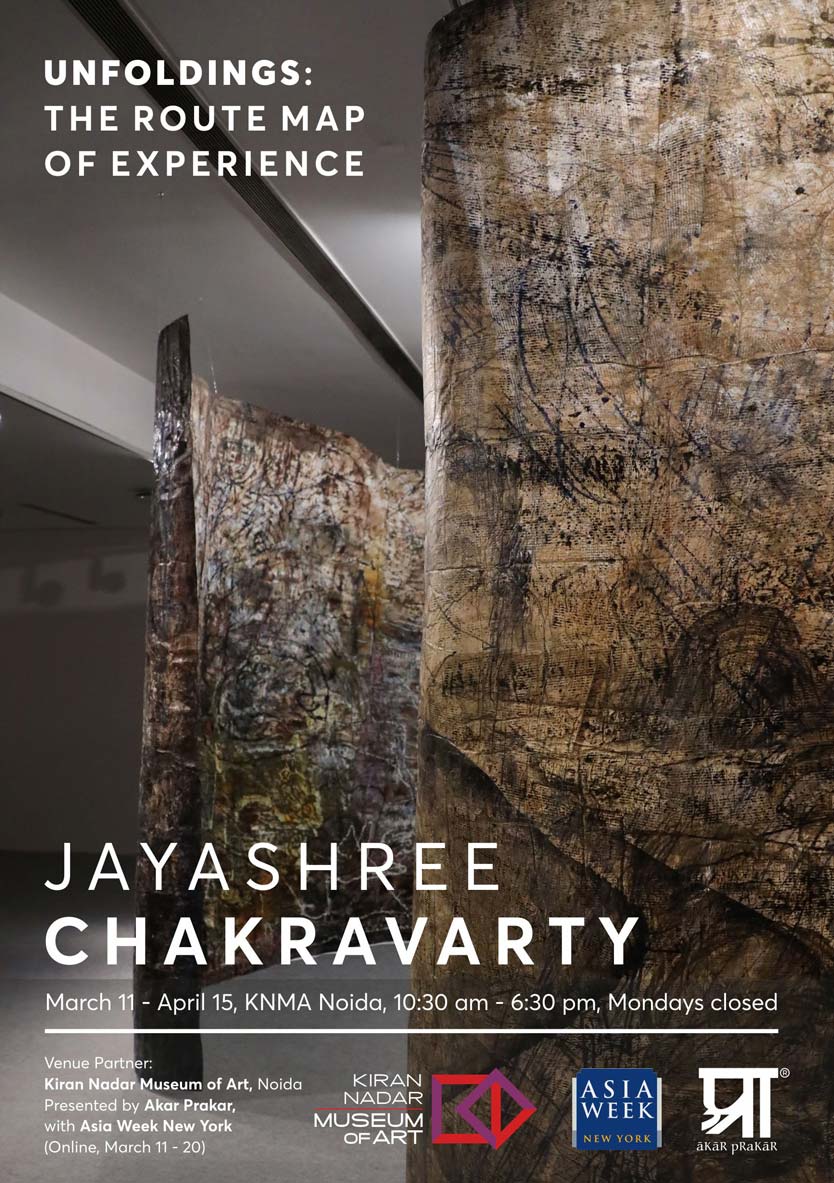
Unfoldings: The Route Map of Experience, a solo by Jayashree Chakravarty is presented by Akar Prakar, India, in collaboration with Asia Week New York (online), and KNMA, as venue partner. In the words of artist Jayashree Chakravarty, “This particular work, when I see it now, after almost eighteen years, I am pleasantly surprised because of the continuous imagery that I spread out in a very painterly way. The idea I worked with, was that I wanted to paint a land that can always stand in front of me. I was immersed in the act of painting and drawing simultaneously, indulging the over-all surface and its texture, overlapping close and distant views, memories echoing words in the encircling form. In making this, I wanted to create a kind of an interior space, an evocation of a sheltering cave or a womb.
Roobina Karode, Director and Chief Curator of KNMA, who has previously curated the practice of Jayashree Chakravarty at the Musée des arts asiatiques, Nice, and at the Musee Guimet in Paris, writes, “Jayashree’s works are experiential - they invite touch, the immersion of the body and senses into the enveloping/unfolding monumental form. In this work done in 2002-3, she creates her handmade paper scroll stretched long to paint on an expansive continuous surface. The nearly sixty feet shape shifting wall-like structure made from the composite of different kinds of paper and fabric pieces, superimposed and glued, invites us, the viewers, into its enveloping space with an interior chamber. The work gradually reveals its various layers and overlapping imagery of the flux of life around us.”
Karode adds, “It is indeed fascinating to see her work with a mobile vantage point, animating the gestural flow of whirling spaces painted on both sides of the scroll. What is worth noting in this particular work is how she has assimilated raw textures and colours of building material - stone, brick and mortar as well as those of earth, soot, limonite and red ochre found in natural shelters.”
KNMA Chairperson Kiran Nadar says: “I really enjoy the way Jayashree responds and creates spaces in and around her work. Her imagery is evocative and affective. It draws the viewer into her multi-layered world. One is lost in the moving and swirling of images that seem to rise and collapse in her monumental scrolls, a remarkable invention in her distinct art practice.”
The Kiran Nadar Museum of Art turns ten this year.
We celebrate the past decade, bringing back vignettes that will highlight the museum’s multi-focal vision, its evolving mission, directions and journeys undertaken, mapping intersecting histories of the subcontinent. Reflecting on KNMA’s archive and collection built over the course of ten years of institution-building exercise and exhibition-making, this 10-years-exhibition reconsiders the complexities of inhabiting semi-permanent spaces, one inside a mall and the other in a technology hub. It explores the potential of a young coming of age institution in South Asia that is continuously plotting under-researched narratives, interventions, shared and collective experiences in art
Amitava Das | Arunkumar HG| Ashim Purkayastha | Bharti Kher |C. Douglas | Debanjan Roy | GR Iranna| Gigi Scaria | Gogi Saroj Pal | Himmat Shah | Jagannath Panda | Jamini Roy | Jayashree Chakravarty | Jitish Kallat | Jyoti Bhatt | Kalighat Paintings | KG Subramanyan |KM Madhusudhanan| Karen Knorr | Leela Mukherjee | LN Tallur | Madhvi Parekh | Manisha Gera Baswani | Manjit Bawa | Manjunath Kamath | MF Husain | Mithu Sen | Prabhakar Pachpute | PS Ladi | Rabindranath Tagore| Ram Rahman | Ranbir Kaleka | Raqib Shaw| Rina Banerjee | Shibu Natesan| Sonia Khurana | Suhasini Kejriwal | Surendran Nair | Tapas Sarkar| Vasudevan Akkitham
SIGHTINGS: out of the wild, presents a selection of over one hundred and fifty artworks of forty artists from the collection of Kiran Nadar Museum of Art and other collections.
Out of place, a startled (living) cheetah within a palatial interior presents conflicting narratives. Is this a forced migration, loss of natural habitat or an accidental detour? A ‘rinky-dinky’ panther in its flamboyant pink body covered with sperm-shaped bindis is ready to leap at its prey or take off to seek life elsewhere. An elephant made of burnt wood excretes silver poop in an unusual case of esophageal reflux. The rhinoceros made out of reclaimed industrial packaging wood burnt and recycled paper pulp is trying to make its way into the room. It is already half-way there. Animals bring back to memory the stuff of childhood, the beauty of their form and texture, their capability to connect and respond to love and care and the desire to draw and shape them in material.
‘Creatures of the mind and less of this world’ frolic and lurk in the dark interiors of the subconscious. A conference of birds and beasts takes place against a semi-apocalyptic, cloudy and smoke-filled sky, derelict cityscape and a facade of an ancestral house, perhaps for arduous journeys yet to be undertaken. And, there we see the cockroach, magnified and beautifully detailed, precariously occupying the edge where sanitized floor and designed buildings confront the sensual lush of nature. The homeless sparrows flutter around a barren tree, while humans occupy the expanding cityscape with more skyscrapers and apartment homes. The endangered butterflies all seek refuge in a cocoon-form, a hide away place, far from the fear of humans. A hybrid, previously non-existent creature, snarls out from depleting agrarian economy of Rajasthan. The winged creatures in the absence of god, cast a spell of doubt amidst all glitters and the column of ants relentlessly move within the anatomy of a house, drawing lines and patterns routing cracks and corners.
‘Sightings: out of the wild’ highlights an existential void and our increasingly uneasy relationship with the natural/animal world- a splintered world that seeks renewal, contact and oneness with nature. It presents fables and allegories of the animal world that appear in human-centric tales and imagination; told and reflected through playful and critical contestations staged between human and other species.
The exhibition hints at the fissures, the trauma of encroachment, human neglect, signs of extinction, resistance and the reverse gaze of the other living worlds.
Artists: ganesh pyne . meera mukherjee. somnath hore .ganesh haloi . jogen chowdhury
The Kiran Nadar Museum of Art (KNMA) is pleased to announce the opening of the first exhibition of 2019, over the edge, crossing the line: five artists from Bengal, at KNMA Noida on 20th January 2019. The exhibition will continue till 30 June 2019.
Continuing the extensive explorations of different art movements, regions and artistic ideologies within South Asia, this year KNMA presents in-depth oeuvres and artistic inclinations of five modern masters from Bengal: Ganesh Pyne (1937 -2013), Meera Mukherjee (1928 – 1998), Somnath Hore (1921 -2006), Ganesh Haloi (b.1936) and Jogen Chowdhury (b. 1939). Coming from various parts of Bengal, their visual vocabularies reach maturity during 1970s and 1980s, with the city of Calcutta emerging as an intersection point. The social and political changes, witnessing and observing major occurrences like the Bengal famine, the Tebhaga movement, the Bangladesh Language Movement, the Vietnam War, and avant-garde mobilization in the creative disciplines of literature, cinema and theatre, has shaped their individual artistic styles and preoccupations. The chronological radius of the exhibition spans more than five decades from 1960s to early 2000s, showcasing more than two hundred artworks from KNMA collection and loans from artists and private collections.
The exhibition pursues the intensity and the edge at which these five practices seem to be located. It tries to look through the traces of what has remained or distilled through long duree process of artistic gesticulations on canvas or paper. Delving into the empirical and the subconscious, these five modern masters have created extraordinary visuals, meticulously ossified from the worlds seen and sensed. They take viewers on a journey to the unknown, and speak of both, longing and suffering, sometimes through direct representation of the real, and at times with allegories and obscure symbols. The exhibition oscillates between scenes soaked in half-light, colour fields, unbroken lines or contours of a figure, decay and poetic distortions, as if almost hiding the corporeal body and paving paths to view the body of a landscape.
Collective anxieties and turmoil surface often in interesting ways in this selected body of work. The exhibition explores how the transfigured, charged and complex imagery challenges rigid perceptions of viewing. With approximately thirty to forty artworks of each artist, the exhibition takes one through their unique journey from different phases of aesthetic formulations: from being chroniclers, appropriating the roles of narrator, illustrator, image makers and activists to being myth-shapers. A diverse range of techniques, mediums and configurations: paintings in tempera, gouache, watercolours, mixed media, ink and pastels, woodcut, lithography, etching and paper pulp prints and sculptures casted in bronze and plaster of Paris constitute this presentation.
For instance, Ganesh Haloi’s untitled gouache works punctuated with sporadic yet minimal colour patches and hyphenated lines, transport the viewer to imaginary pasturelands. These transitory landscapes hold the memory of real pathways and evoke a sensory and spatial experience of movement. In an almost contrasting rhythm are Ganesh Pyne’s quick jottings in pen and the multi-layered tempera works like Death (1975) or The Swim which falls between the real and the mysterious. Pyne, who has always been immensely drawn to water, creates these layers of dark undercoats of paint and then applies lighter colours to create mysterious effects, invites us to take detours from the surfatial. Meera Mukherjee’s sculptural explorations of myths and decorative patterns, modelled with a certain solidity of wax, recreate her observations and learnings in bronze-casts techniques learnt from living with the craftsmen of Bastar. Her sculptures like Nagardola (Ferris wheel) or Srishti depict the cyclical rhythm of human survival.
In Jogen Chowdhury’s Gulabi Takia (1977-80) made in ink and pastel on board, or A Couple (1984) painted in ink and pastel on paper, one sees the tender or uneven contours of human figures made with intricate crosshatchings. They lack firmness as if mirroring the deformation of societal structures. Somnath Hore’s figures, studies and symbolic open wounds tend towards minimal forms. He pulls our attention to the emaciated bodies who are delicately etched between hunger and fasting. His Wounds (1973), the paper pulp prints, though echo the memories of violence in Vietnam war, are reflections on human existence and the sufferings from man-made wars and scarcities.
OPENING PREVIEW: 20 January 2019, Sunday, 6.30 pm onwards
KNMA-NOIDA, Plot 3A, Sector 126, Noida, U.P.
Exhibition Dates: 22 January – 30 June 2019
Closed on Monday and Public Holidays, 10.30 am – 6.30 pm

.png)
_0.jpg)



























.jpg)












.jpg)






























